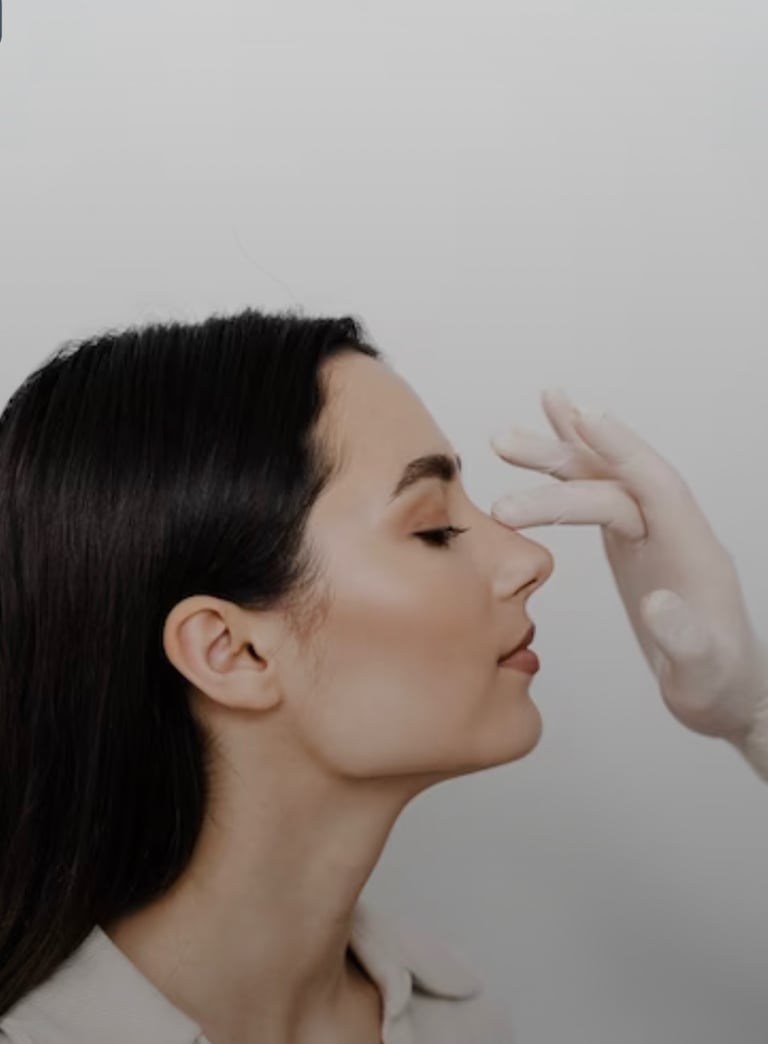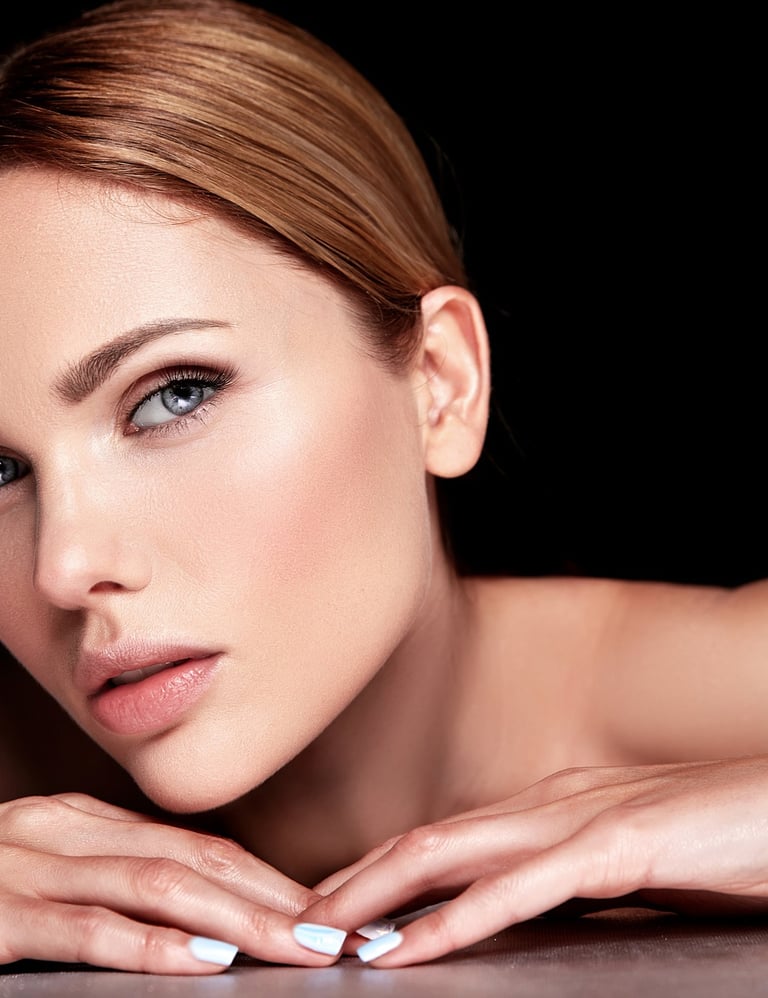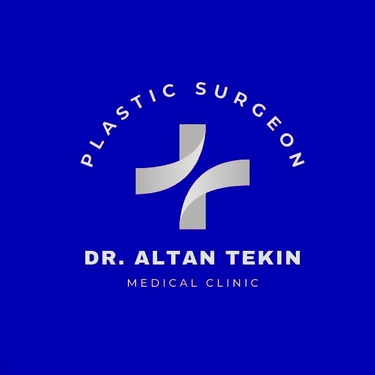CONTACT US: +90 544 138 84 64
Rhinoplasty
The best plastic surgeon at Rhinoplasty/ nosejob in Antalya.
Rhinoplasty is a surgical procedure popularly known as rhinoplasty or nose surgery. Rhinoplasty surgery aims to change the shape and appearance of the nose. This surgery can be performed for aesthetic reasons as well as to correct or improve nasal functions.
During rhinoplasty surgery, the nasal bone and cartilage tissues are shaped, cut or rearranged. This procedure can change the shape, size and proportions of the nose. The surgery is usually performed by cutting and lifting the skin above the nose and accessing the cartilage and bone tissues underneath. The nasal structure is then shaped to the desired shape and the skin is closed back.
Rhinoplasty surgery can be performed for the following purposes:
Aesthetic Reasons: Individuals who are dissatisfied with the shape, size or proportions of the nose can change the appearance of their nose in a more aesthetic and balancing way with rhinoplasty. In this, changes can be made in areas such as the tip of the nose, the back of the nose, the wings of the nose and the profile.
Functional Causes: Problems such as nasal congestion, breathing difficulties or septum curvature can be corrected during rhinoplasty surgery to improve nasal function.
Post Trauma Repair: Injuries or deformities in the nose caused by trauma or accidents can be corrected with rhinoplasty to restore normal appearance and function.


WHAT ARE RHINOPLASTY TECHNIQUES?
Rhinoplasty surgeries can be performed using different techniques. The method of the surgery is determined by factors such as the patient's nasal structure, aesthetic goals, the surgeon's preferences and experience. Here are some basic techniques commonly used in rhinoplasty surgeries:
Open Rhinoplasty (External Rhinoplasty): Open rhinoplasty is a technique performed through an incision made inside the nostrils and above the nasal cartilage during nose surgery. By lifting the nasal skin, the structures under the nose become better visible. This technique is usually preferred for complex revision rhinoplasty or cases requiring major shape changes. However, the risk of scarring is higher.
Closed Rhinoplasty (Endonasal Rhinoplasty): Closed rhinoplasty is a technique performed with incisions made through the nostrils. In this technique, the stitches are not visible from the outside. Tissue manipulation is more limited and the healing process may be shorter. Swelling and bruising may be less due to less tissue trauma. It may be preferred for simpler aesthetic changes and minor corrections.
Combination of Open Rhinoplasty and Closed Rhinoplasty: In some cases, surgeons may try to achieve the best results by combining both open and closed rhinoplasty techniques. This method may be preferred depending on the surgeon's experience and the needs of the patient.
Revision Rhinoplasty: It is a technique performed to correct or improve the result of a previous rhinoplasty. Revision rhinoplasty aims to correct the problems that occurred after the first surgery.
Ultrasonic Rhinoplasty: Ultrasonic rhinoplasty is a technique to reshape the nasal bone or cartilage using ultrasonic devices. This method is preferred to provide a more precise and controlled shaping.


WHAT SHOULD BE CONSIDERED AFTER RHINOPLASTY SURGERY?
There are some important points that you should pay attention to in order for the healing process to be comfortable and successful after rhinoplasty surgery. Here are the points you should pay attention to after rhinoplasty surgery:
Rest and Recovery Process: It is important to rest and focus on recovery after surgery. You should avoid heavy physical activity for the first few days after surgery. Keeping your head elevated can reduce swelling and discomfort.
Pain and Medication: You may experience mild pain and discomfort after surgery. You can use painkillers recommended by your doctor. However, avoid medications that may increase the risk of bleeding, such as blood thinners or aspirin.
Wound Care: You should take care to keep the inside of the nose and suture areas clean and dry. You should take wound care according to your doctor's recommendations.
Swelling and Bruising: Swelling and bruising are normal after surgery. These symptoms will decrease over time. Cold compresses can help reduce swelling.
Nutrition and Fluid Consumption: You should pay attention to a good diet and sufficient fluid consumption after surgery. Healthy foods and water support the healing process.
Alcohol and Smoking: Avoid alcohol and smoking for at least a few weeks after surgery. Alcohol and nicotine can negatively affect the healing process.
Use of Glasses: If you wear glasses, avoid wearing them for as long as your doctor recommends. This can help reduce pressure on the nose.
Doctor Checks: You should have regular check-ups as recommended by your doctor. These checks are important to follow the healing process and results.
Waiting for First Results: It may take several weeks or even months to see the full result of the post-operative nose. The healing process may differ from person to person.
Following the Doctor's Instructions: You should definitely follow your doctor's recommendations and instructions. You should follow your doctor's advice to best manage the healing process and prevent unwanted consequences.


RHINOPLASTY AFTERCARE
You are now in the very early stages of healing and these are some of the things you may experience over the next 2-3 months.
It may take some time to become acquainted with your new nose so please don’t worry.
You may have different emotions - be very happy or feel shocked, tearful and very emotional, both reactions are very normal at this stage
DO NOT:
1. Have any facials or beauty treatments for up to 6 weeks.
2. Let anyone else inject your nose with fillers.
3. Undertake strenuous ‘red faced’ exercise for 3-4 weeks to minimise swelling in the skin.
Refrain from any contact sports for 6 weeks, as your nose will still be very vulnerable.
4. Fly for 10-12 days following surgery.
Your next appointment will be in approximately 12 weeks’ time, please do remember you’re still in the healing process. It is a long journey of around 6-12 months, and you will need to be very patient, so try to sit back and enjoy it.
Expect:
1. Congestion/difficulty breathing.
2. Dissolvable stiches that may be visible and will drop out of the nose.
3. To feel irregularities or notice asymmetries. This happens during the healing process.
4. Tingling, a woody sensation and numbness around the tip of the nose.
5. To be very aware of your nose!
What is important to you now:
1. You may blow your nose gently.
2. Moisture inside of your nose is helpful. Steam in the shower or use inhalations of steam up
to 2-3 times a day. This will help with congestion (congestion can normally be a problem for up to 6 weeks). We normally recommend a sesame seed oil spray e.g. Gelositin/Nozoil. These are soothing and minimise crusting.
3. Look after your skin– use a non-soap gentle cleanser and gentle exfoliation for the first two weeks. We will advise you on any additional products. Use a SPF 50 sunscreen all over the nose (including the base of nose) and face, for the first two months after surgery.
4. In the early weeks it is not unusual to detect an odour inside your nose, this is normally from the dissolvable stitches. Clean gently inside your nostrils with a moistened cotton bud.
5. You will see some variable swelling in your nose usually related to your skin type. We will advise you if tapping or massage is required. To massage, place your index finger on either side of the nose just below the bridge and sweep down the cheeks. Work your way down to the tip. Do this for 2-3 minutes as part of your skin care. We will instruct you about tapping if necessary.
6. You may wear makeup as soon as your plaster is removed.
7. Glasses are permissible. They sometimes, however, make an impression on your skin. You
may consider contact lenses if your nose is still too tender.
Frequently asked questions
What are the devices used in rhinoplasty surgery?
A number of different devices are used in rhinoplasty surgeries. Firstly, there are endoscopic cameras that surgeons often use in rhinoplasty surgeries to correct the shape of the nose. These cameras provide better access to the structures inside the nose and allow surgeons to monitor the progress of the surgery. There are also nose shaping files and chisels used to correct the shape of the nose and narrow the wings of the nose. These tools help surgeons to correct and shape the tissues of the nose. There are also laser devices used in rhinoplasty surgeries. These devices allow surgeons to correct the tissues inside the nose without cutting or bleeding. All of these devices are important tools that are successfully used in rhinoplasty surgeries and achieve results.
What is piezo rhinoplasty surgery? What are its advantages and disadvantages? Will there be less bruising after piezo rhinoplasty?
Piezo rhinoplasty surgery is a method that allows for more precise and controlled nasal shaping compared to traditional surgical methods. In this technique, the nasal bone is cut and shaped using ultrasonic vibrations. The advantages of piezo rhinoplasty include less tissue damage, shorter recovery time, and less bleeding. In addition, a more natural and symmetrical nose can be achieved with this method. The disadvantages include a longer surgical process and a higher cost. The amount of bruising after piezo rhinoplasty may vary from person to person. However, there is generally less bruising and swelling compared to other methods.
How long does a splint or cast remain after nose surgery?
After nose surgery, the length of time that a splint or cast will be applied may vary depending on the type of surgery and the surgical procedure performed. Generally, a splint or cast is used after nose surgery to maintain the shape of the nose and support the healing process. This process can usually vary between 1 and 2 weeks. During follow-up check-ups after surgery, your doctor will evaluate the healing process of your nose and inform you when the splint or cast should be removed. However, since each individual's healing process may be different, it is important to follow your doctor's recommendations and not skip regular check-ups.
Does the nose droop after rhinoplasty? What can I do if the tip of the nose droops?
The nose may droop after rhinoplasty. This can sometimes occur as a result of rhinoplasty surgery. However, this does not always happen because everyone's nose structure and healing process are different. It is important to see your doctor if the tip of the nose droops. Your doctor will recommend a treatment plan that suits you. However, it is important to follow the healing process carefully after the surgery to prevent the tip of the nose from drooping. Following your doctor's instructions will help reduce swelling and bruising and help the nose to take the desired shape.
How can I choose a doctor for rhinoplasty? How can I get the best result?
Choosing a doctor for your rhinoplasty is an important factor that affects your results. It is important to follow a few steps to achieve an ideal result. First, you need to find an experienced and expert rhinoplasty surgeon. You can start by researching the surgeon’s past work experience and achievements. It is also important to check your surgeon’s certifications and educational background. Second, you can evaluate your doctor’s track record by reviewing many patient references and real patient reviews. It is also important to schedule a consultation with your doctor. During this appointment, you can clearly state your expectations and desires, and ask your doctor questions. Finally, you should make sure that your surgeon is someone who can communicate with you and gives you confidence. By following all these steps, you can choose the right doctor to get the best results.
When can I wear glasses after rhinoplasty surgery?
The duration of wearing glasses after rhinoplasty surgery varies depending on the person's recovery process and the doctor's recommendations. It is generally not recommended to wear glasses immediately after surgery because it can increase the pressure on the nose and delay the healing process. However, you can wear glasses after a period of time that your doctor allows. This period can usually be 2-4 weeks after surgery. Your doctor will give you a more specific time frame depending on your nose structure and how the surgery went. It is also important to choose lightweight and properly designed eyeglass frames to minimize the pressure on the nose even after you start wearing glasses.
Will the nose become crooked again after rhinoplasty surgery?
In cases where the nose is crooked after rhinoplasty surgery, it can rarely be crooked again. This situation can usually occur due to not following the correct healing process after surgery or complications that occur during the healing process. It is important to pay attention to your doctor's recommendations to prevent a crooked nose after surgery. Going to regular follow-up check-ups after surgery and following all the instructions recommended by your doctor can reduce the possibility of unwanted results. However, since each individual's healing process is different, the risk of a crooked nose after surgery cannot be completely eliminated. Therefore, it is important to contact your doctor if you encounter any problems after surgery.
Is smell affected after rhinoplasty surgery?
The sense of smell may be affected after rhinoplasty surgery. Rhinoplasty is a nose aesthetic surgery and is performed by making changes to the nasal structure. During surgery, the tissues and nerves inside the nose may be affected. This can sometimes cause a temporary decrease or change in the sense of smell. However, this is usually not permanent and improves over time. A careful recovery process after surgery and compliance with the doctor's recommendations can help the sense of smell return more quickly and completely. On the other hand, each individual's recovery process may be different, so how the sense of smell is affected after surgery may vary from person to person.
Does the tip of the nose droop after rhinoplasty?
There is a possibility that the tip of the nose may droop after rhinoplasty. This may occur during the natural healing process of the nasal structure after surgery. During the rhinoplasty operation, the nasal cartilage and tissues are reshaped, and the tip of the nose can also be corrected. However, in some cases, the tip of the nose may tend to collapse or droop after surgery. This is usually due to tissue healing and edema. However, such problems are usually temporary and can be resolved with the healing process. If you have concerns about the tip of the nose drooping after rhinoplasty, it is important to consult with your doctor for the most appropriate solution.
What are the reasons why I have a bad odor after rhinoplasty surgery?
There are several different reasons for a bad smell after rhinoplasty surgery. First, it is normal for the tissues in the nose to heal after surgery, and a temporary bad smell may occur during this process. In addition, there may be an infection or inflammation in the mucosal tissue inside the nose, which can cause a bad smell. Failure to cleanse carefully after surgery or the presence of blood or crusts inside the nose can also cause a bad smell. However, if the bad smell is severe and long-lasting, it is important to see your doctor.
Is it possible to have difficulty breathing after rhinoplasty surgery?
There may be some difficulty breathing after rhinoplasty surgery. After this surgery, there may be swelling and a feeling of congestion in the nose, which can make breathing difficult temporarily. In addition, due to the changes made to the structures in the nose during surgery, breathing patterns may be affected for a while. However, since the purpose of rhinoplasty surgery is to correct nasal aesthetics, patients with breathing problems may continue to have breathing problems after rhinoplasty. Therefore, it is important for patients who have breathing problems after rhinoplasty surgery to consult their doctors and receive the necessary treatment.
